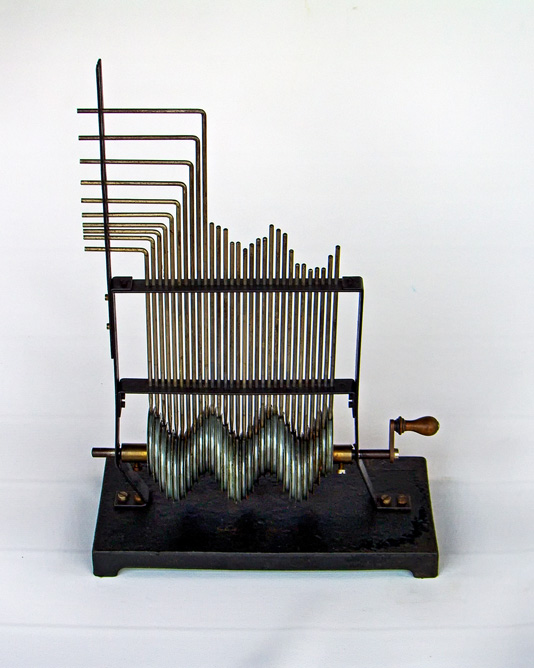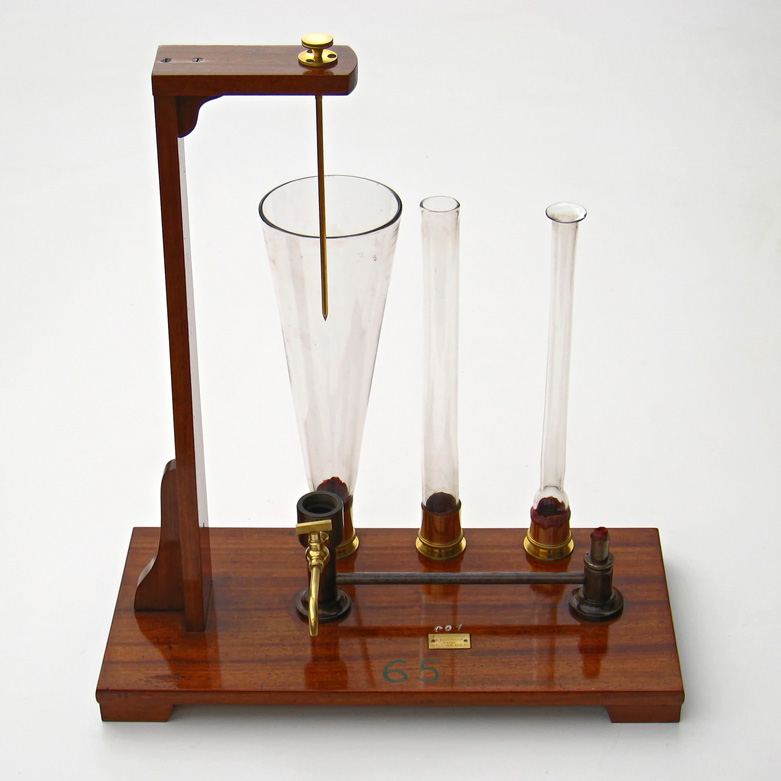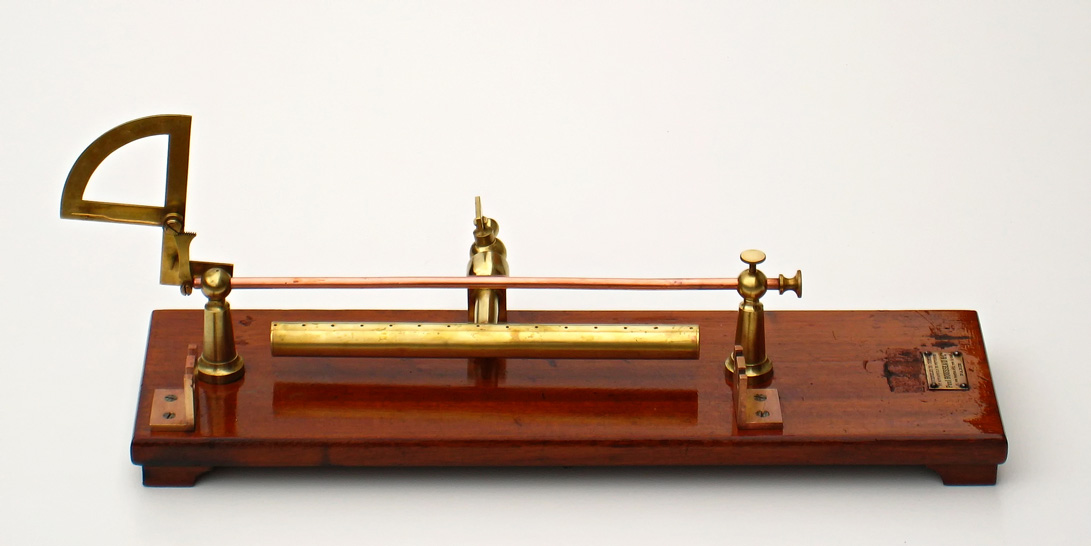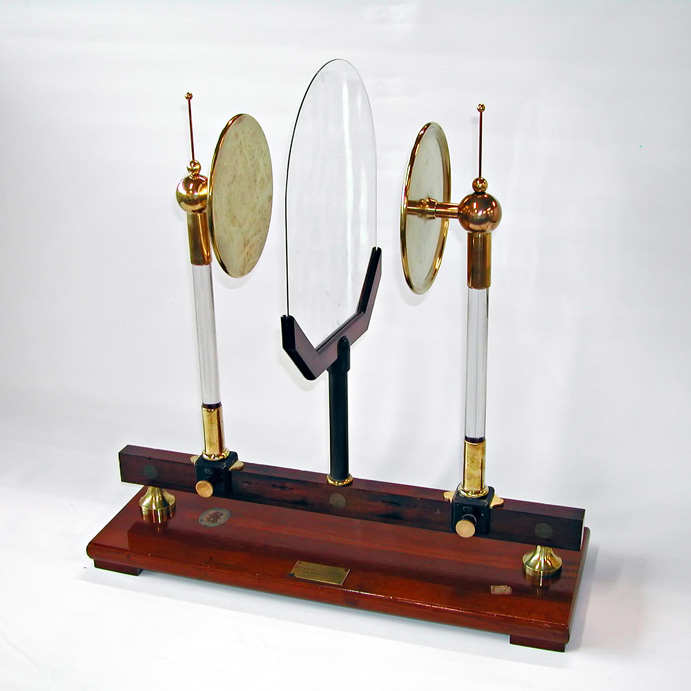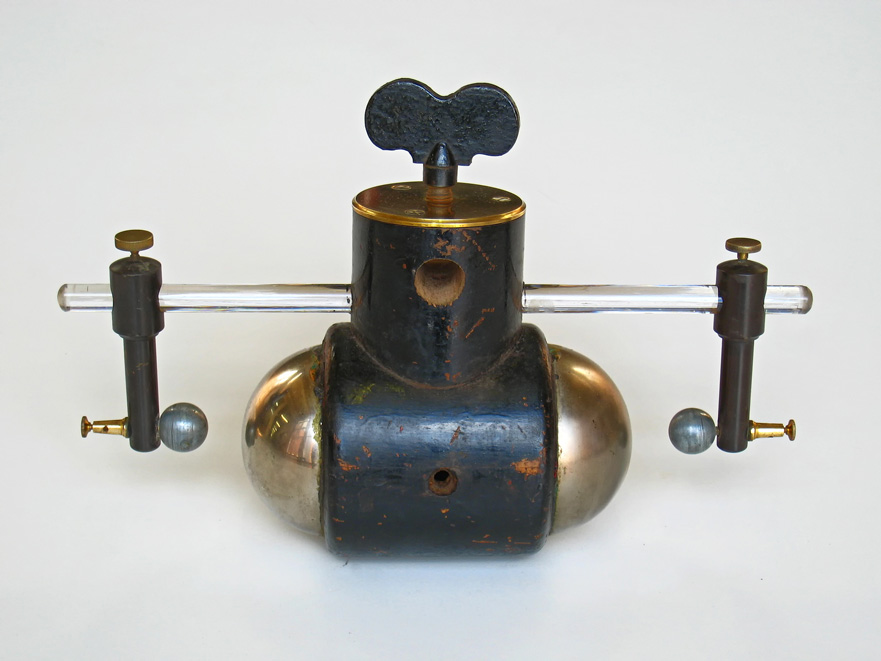Subareas
The whole collection is divided into the following subareas (we have adopted the european terminology of the late XIX or early XX century): Acoustics, Mechanics of Liquids and Gases, Heat, Electricity, Electrodynamics, and Optics.
Within any given section, each equipment will be described on an individual page. For each instrument we suggest a bibliography which includes, in some cases, an article describing the context of its invention and short biography of the inventor.
Almost the entire collection (related, approximately, to the first five decades of EMOP) is of European origin (mostly French or German), and we could easily recognize its association with current programs of basic Physics, at freshman or sophomore levels.
The catalogues of various manufacturers were an important initial resource for our work. On the individual pages of the instruments one will often find references to Max Kohl, E. Leybold's Nachfolger, Les Fils d'Émile Deyrolle, Jules Duboscq, among others.
Other valuable sources that we reference are the virtual museums of several prestigious institutions (Smithsonian, Harvard University Collection of Scientific Instruments, University of Oxford History of Science Museum, University of Cambridge Whipple Museum of the History of Science, Museo Galileo and many others), where we could find many of the instruments that are also present in our collection. We specially aknowledge the extensive work by Prof. Thomas B. Grerenslade, Jr., published at Instruments for Natural Philosophy, where we could find a vast amount of authoritative information.
To find out how exactly, and to what extent, these teaching instruments were used at the EMOP didactic lab, in its early history, would be a hard task, due to the lack of record on this particular (but important) aspect of our academic history.
However, from an attentive examination of the whole collection and some evidence found in old textbooks and catalogues, we are tempted to draw a few conclusions: (i) a large investment was made in order to build the didactic laboratory, as we can infer from the large number of instruments acquired, as well as their quality of manufacturing; (ii) the laboratory classes had a more qualitative and demonstrative approach, being performed under the command of the instructor (in contrast with the current practice, when the students are encouraged to be more proactive); (iii) the Physics college program was quite modern for the time, as we clearly find out that many of the instruments were then related to fairly recent technical or scientific developments.
.jpg)

